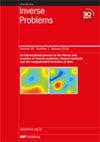Enhanced microscale hydrodynamic near-cloaking using electro-osmosis
IF 2
2区 数学
Q1 MATHEMATICS, APPLIED
引用次数: 0
Abstract
In this paper, we develop a general mathematical framework for enhanced hydrodynamic near-cloaking of electro-osmotic flow for more complex shapes, which is obtained by simultaneously perturbing the inner and outer boundaries of the perfect cloaking structure. We first derive the asymptotic expansions of perturbed fields and obtain a first-order coupled system. We then establish the representation formula of the solution to the first-order coupled system using the layer potential techniques. Based on the asymptotic analysis, the enhanced hydrodynamic near-cloaking conditions are derived for the control region with general cross-sectional shape. The conditions reveal the inner relationship between the shapes of the object and the control region. Especially, for the shape of a deformed annulus or confocal ellipses cylinder, the relationship of shapes is quantified more accurately by recursive formulas. Our theoretical findings are validated and supplemented by a variety of numerical results. The results in this paper also provide a mathematical foundation for more complex hydrodynamic cloaking. Additionally, the concept of cloaking has efficient applications in the field of microfluidics, including drag reduction, microfluidic manipulation, and biological tissue coculture.利用电渗技术增强微尺度流体力学近包裹性
在本文中,我们建立了一个通用数学框架,通过同时扰动完美隐形结构的内部和外部边界,来增强形状更复杂的电-渗透流的流体力学近隐形。我们首先推导出扰动场的渐近展开,并得到一个一阶耦合系统。然后,我们利用层势技术建立了一阶耦合系统解的表示公式。在渐近分析的基础上,我们推导出了具有一般截面形状的控制区域的增强流体力学近包裹条件。这些条件揭示了物体形状与控制区域之间的内在联系。特别是对于变形的环形或共焦点椭圆圆柱体的形状,可以通过递归公式更精确地量化形状之间的关系。我们的理论发现得到了各种数值结果的验证和补充。本文的结果也为更复杂的流体力学隐形提供了数学基础。此外,隐形概念在微流体领域也有高效应用,包括减少阻力、微流体操纵和生物组织共培养。
本文章由计算机程序翻译,如有差异,请以英文原文为准。
求助全文
约1分钟内获得全文
求助全文
来源期刊

Inverse Problems
数学-物理:数学物理
CiteScore
4.40
自引率
14.30%
发文量
115
审稿时长
2.3 months
期刊介绍:
An interdisciplinary journal combining mathematical and experimental papers on inverse problems with theoretical, numerical and practical approaches to their solution.
As well as applied mathematicians, physical scientists and engineers, the readership includes those working in geophysics, radar, optics, biology, acoustics, communication theory, signal processing and imaging, among others.
The emphasis is on publishing original contributions to methods of solving mathematical, physical and applied problems. To be publishable in this journal, papers must meet the highest standards of scientific quality, contain significant and original new science and should present substantial advancement in the field. Due to the broad scope of the journal, we require that authors provide sufficient introductory material to appeal to the wide readership and that articles which are not explicitly applied include a discussion of possible applications.
 求助内容:
求助内容: 应助结果提醒方式:
应助结果提醒方式:


